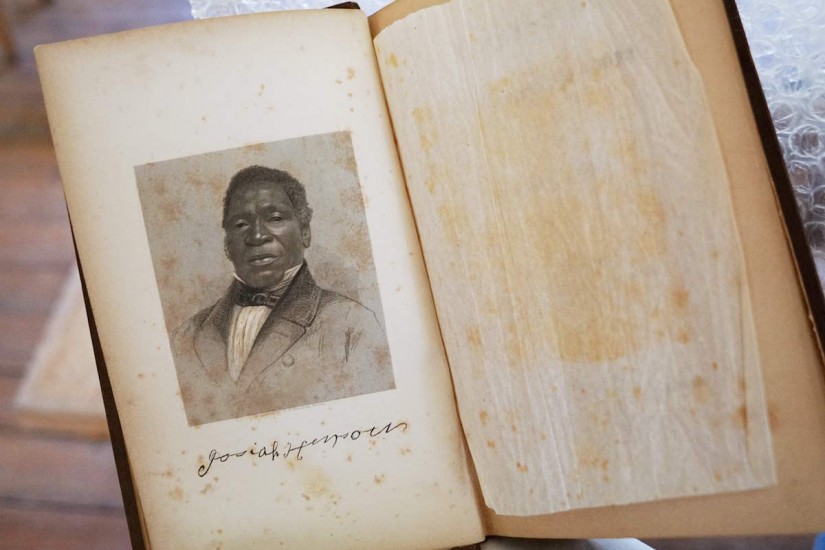Once in a new land, Henson helped start in 1841 a freeman settlement called the British American Institute, in an area called Dawn, which became known as one of the final stops on the Underground Railroad. Henson repeatedly returned to the U.S. to guide 118 other slaves to freedom. It was a massively dangerous undertaking, but Henson saw a greater purpose than simply living out his life in Ontario, Canada. In addition to his service to the school, Henson ran a farm, started a gristmill, bred horses, and built a sawmill for high-quality black lumber— so good, in fact, that it won him a medal at the first World’s Fair in London ten years later.
Before the Civil War, Henson frequently traveled unhindered between Ontario and Boston, where he often preached. During one such trip, Henson befriended the abolitionist Samuel Atkins Eliot, a former mayor of Boston and state legislator; Eliot would later serve in the U.S. House of Representatives.
Impressed with Henson, Eliot offered to pen the story of his life as a memoir. That book, titled The Life of Josiah Henson, Formerly a Slave, Now an Inhabitant of Canada, as Narrated by Himself, was published in early 1849.
Henson’s book garnered attention at the abolitionist reading room in Boston as well as in like-minded households throughout the North. On one of his trips home from Boston, Henson took a detour to visit a woman who was about to write a book of her own. As a later edition of Henson’s memoir recalls:
“I was in the vicinity of Andover, Mass., in the year 1849, where Mrs. Harriet Beecher Stowe resided. She sent for me and my travelling companion, Mr. George Clark, a white gentleman, who had a fine voice for singing, and usually sang at my meetings to add to their interest. We went to Mrs. Stowe’s house, and she was deeply interested in the story of my life and misfortunes, and had me narrate its details to her. She said she was glad it had been published, and hoped it would be of great service, and would open the eyes of the people to the enormity of the crime of holding men in bondage. She manifested so much interest in me, that I told her about the peculiarities of many slaveholders, and the slaves in the region where I had lived for forty-two years. My experiences had been more varied than those of the majority of slaves...”


